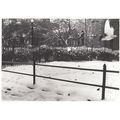Hunstanton, Norfolk - St Edmunds Chapel, Lighthouse -Valentine postcard c.1920s
- Condition : Used
- Dispatch : 2 Days
- Brand : None
- ID# : 206258938
- Quantity : 1 item
- Views : 189
- Location : United Kingdom

- Seller : justthebook (+1704)
- Barcode : None
- Start : Wed 29 Dec 2021 07:09:28 (EDT)
- Close : Run Until Sold
- Remain : Run Until Sold
Checks/Cheques
 for 1 item(s) edit
for 1 item(s) edit
Shipping Calculator
More Listings from This Seller view all
Seller's Description
- Postcard
- Picture / Image: St. Edmunds Chapel and Lighthouse, Hunstanton [Norfolk]
- Publisher: Valentines (77119)
- Postally used: no
- Stamp: n/a
- Postmark(s): n/a
- Sent to: n/a
- Notes / condition:
Please ask if you need any other information and I will do the best I can to answer.
Image may be low res for illustrative purposes - if you need a higher definition image then please contact me and I may be able to send one. No cards have been trimmed (unless stated).
------------------------------------------------
Postage & Packing:
Postage and packing charge should be showing for your location (contact if not sure).
No additional charges for more than one postcard. You can buy as many postcards from me as you like and you will just pay the fee above once. Please wait for combined invoice. (If buying postcards with other things such as books, please contact or wait for invoice before paying).
Payment Methods:
UK and all other locations - PayPal or other methods listed above.
NOTE: All postcards are sent in brand new stiffened envelopes which I have bought for the task. These are specially made to protect postcards and you may be able to re-use them.
I will give a full refund if you are not fully satisfied with the postcard.
----------------------------------------------
Text from the free encyclopedia WIKIPEDIA may appear below to give a little background information (internal links may not work) :
*************
Hunstanton is a seaside town in Norfolk, England, which had a population of 4,229 at the 2011 Census.[1] It faces west across The Wash, making it one of the few places on the east coast of Great Britain where the sun sets over the sea. Hunstanton lies 102 miles (164 km) north-north-east of London and 40 miles (64 km) north-west of Norwich.[2]
Hunstanton is a 19th-century resort town, initially known as New Hunstanton to distinguish it from the adjacent village of that name. The new town soon exceeded the village in scale and population.
The original settlement, now Old Hunstanton, probably gained its name from the River Hun, which runs to the coast just to the east. It has also been argued that the name originated from "Honeystone", referring to the local red carr stone. The river begins in the grounds of Old Hunstanton Park, which surrounds the moated Hunstanton Hall, the ancestral home of the Le Strange family. Old Hunstanton village is of prehistoric origin and lies near to the head of Peddars Way. In 1970, evidence of Neolithic settlement was found. The quiet character of the village remains distinct from its busy sibling and complements it with clifftop walks past a redundant lighthouse and the ruins of St Edmund's Chapel, built in 1272.
In 1846, Henry Styleman Le Strange (1815–1862),[8] decided to develop the area south of Old Hunstanton as a bathing resort. He brought a group of like-minded investors into building a railway line from King's Lynn. In 1861, Le Strange, as principal landowner, became a director of the railway company. By 1862 the line had been built. Le Strange died that year at the age of 47, leaving his son Hamon to reap the rewards of his efforts. The Lynn and Hunstanton Railway became one of the most consistently profitable in the country.
Le Strange moved the ancient village cross from Old Hunstanton to a new site in 1846. In 1848 the first main building, the Royal Hotel (now the Golden Lion), was built by Victorian architect, William Butterfield, a friend of Le Strange. Overlooking a sloping green and the sea, and for several years standing alone, it earned the nickname "Le Strange's Folly". In 1850 Le Strange, an amateur architect and painter, appointed a land agent to survey the site and prepare a plan. Le Strange drew and painted a map and a perspective of the scheme, showing shops, a station and a church. He consulted William Butterfield on the design. Their shared passion was for an "Old English" style of architecture for domestic buildings, owing much to medieval precedents and the earnest Victorian Gothic Revival. Hunstanton came to exemplify a 19th-century estate seaside town. Most of the fabric and character of that development survives.
In 1915, during the First World War, Hunstanton was the headquarters of the West Norfolk training programme of the Queen's Own Cameron Highlanders, as they prepared for active service in France.[9]
Hunstanton was hit badly by the North Sea Flood of 1953. The wall of water on the night of 31 January – 1 February killed 31 people, 16 of them American servicemen and their families. There were 35 more victims in neighbouring Snettisham and Heacham.[10]
Listing Information
| Listing Type | Gallery Listing |
| Listing ID# | 206258938 |
| Start Time | Wed 29 Dec 2021 07:09:28 (EDT) |
| Close Time | Run Until Sold |
| Starting Bid | Fixed Price (no bidding) |
| Item Condition | Used |
| Bids | 0 |
| Views | 189 |
| Dispatch Time | 2 Days |
| Quantity | 1 |
| Location | United Kingdom |
| Auto Extend | No |



















